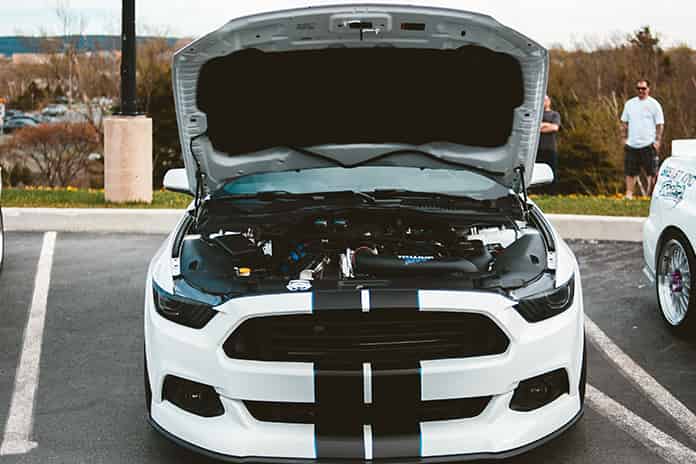Reliable, powerful, and efficient are just some of the ways you can describe Ford’s Coyote ending. Mustang owners are, without a doubt, fond of this engine. There’s a lot of rave about it, from a great deal of flexibility, ability to fit various applications, and the fact that the Coyote engine can be swapped with engines from different types of cars. This engine is particularly a favorite with Fox Body Mustangs, which have incredible speed with a Coyote swap.
As eager as you might be to do the swap, you must first know if your car is built for this, as well as other essential information before you complete a Coyote swap. Here are eight very important elements:
Swap Modifications
As a modular engine, the Coyote brings to the table an immense level of adaptability. This offers owners and swap specialists the flexibility of trading out various parts in favor of others that are compatible and designed to fit modular engines. This also means that swap specialists and owners are open to a world of vast customization and creativity for their engines and cars.
Where the Coyote is concerned, the engines are large compared to the ones used in classic Ford muscle cars. In this aspect, you need to be prepared for the possibility of choosing a different body in the event the body of the engine doesn’t fit your choice. Also, be open to any modifications that may be needed for the car’s body. Don’t worry, though. The power in these engines will make all these extra adjustments worth it.
Motor Mounts
Again, the modular design of the Coyote engine allows for different customization options for each part, which makes swapping effortless. Among the most effortless components are motor mounts. These components are the easiest to source, as all you need is a set that complements your modular engine. Also, depending on your car body, you may need to make some cut-out adjustments to ensure that the engine mounts beautifully and perfectly.
Fuel System
Your fuel system needs an overhaul, too. You’ll most likely need a new oil pan, especially if you’re completing a Fox Body swap. Cars manufactured in the 1960s commonly use front-sump oil pans, but the Coyote uses a rear-sump pan that won’t co-exist with the old chassis. This means you either need a non-stock filter or an adapter to make it fit well. To do this, you must take careful measurements before the beginning of any installation to prevent any unnecessary fixes later.
Transmission
You can most definitely use the stock transmission that comes along with your car when you do a swap. However, this isn’t the most recommended solution, especially if you’re swapping out your engine in a light-body Mustang. The reason is that the transmission will need to handle higher horsepower. A Fox Body Mustang is built to handle 225 horsepower, but when you do a Coyote swap, you’re looking at at least 412 horsepower. In the same pipeline, you also need to decide whether this transmission will be a manual or an automatic one. Manuals are more popular with Mustangs. However, automatic transmissions will fit perfectly to a Coyote crate engine, so keep this in mind.
Control Pack
You may think you don’t need a control pack, but whatever engine and car body you use in your swap, you need one. The go-to one that comes highly recommended by professionals is the Ford Racing Performance Parts simply because it’s easy to find, easy to buy, and easy to install. You can use other kinds of control packs, but they come with different setups, and you’ll end up searching and scavenging for parts. For a Fox Body, you also need a bracket to mount the gas pedal because the one that comes with the control pack usually doesn’t fit right. The airbox may also need a MAF relocated just to ensure it fits well.
Getting A Swap Kit
A swap kit is also recommended as it can help you accomplish your installation, and it also includes various supporting products and parts that can accelerate your Coyote swap project. A swap kit such as https://shop.revologycars.com/collections/coyote-swap-kit comes with upgraded suspension, steering, and braking solution that enables easy installation into the engine bay.
Other Parts
Apart from the components described above, you can also trade out other parts, such as bell-housing for racing-ready parts, or replace your exhaust with a new H or X pipe. You can most definitely update the existing AC and power steering with aftermarket brackets and new power steering hose. There are various options if you want to do swaps, but the general rule is to know what you want in your car and the best places to get it before you invest.
The Costs
Of course, budgets are also a major element in deciding swappable parts for car enthusiasts wanting to upgrade their vehicles. Expect to fork out at least $12,000 in a Coyote swap. This only covers all the parts you’ll require to complete the swap, and you’ll do it all by yourself. If the budget is a huge concern, you may want to space your project over a period of time to ensure you can complete your swap in the best way possible, with the right parts and with the right knowledge because you don’t want to get into unnecessary changes which may cost you more. Spacing out your project means you can handle the financial implications that come with your project, and you don’t end up with a half-finished swap.
Finally, it’s always a good idea to speak to a swap specialist before you get on with any modifications, as they can give you advice on which parts need to be swapped and how best you can complete it.
Also Read: How Will The Autonomous Car Handle Emergency Situations?

